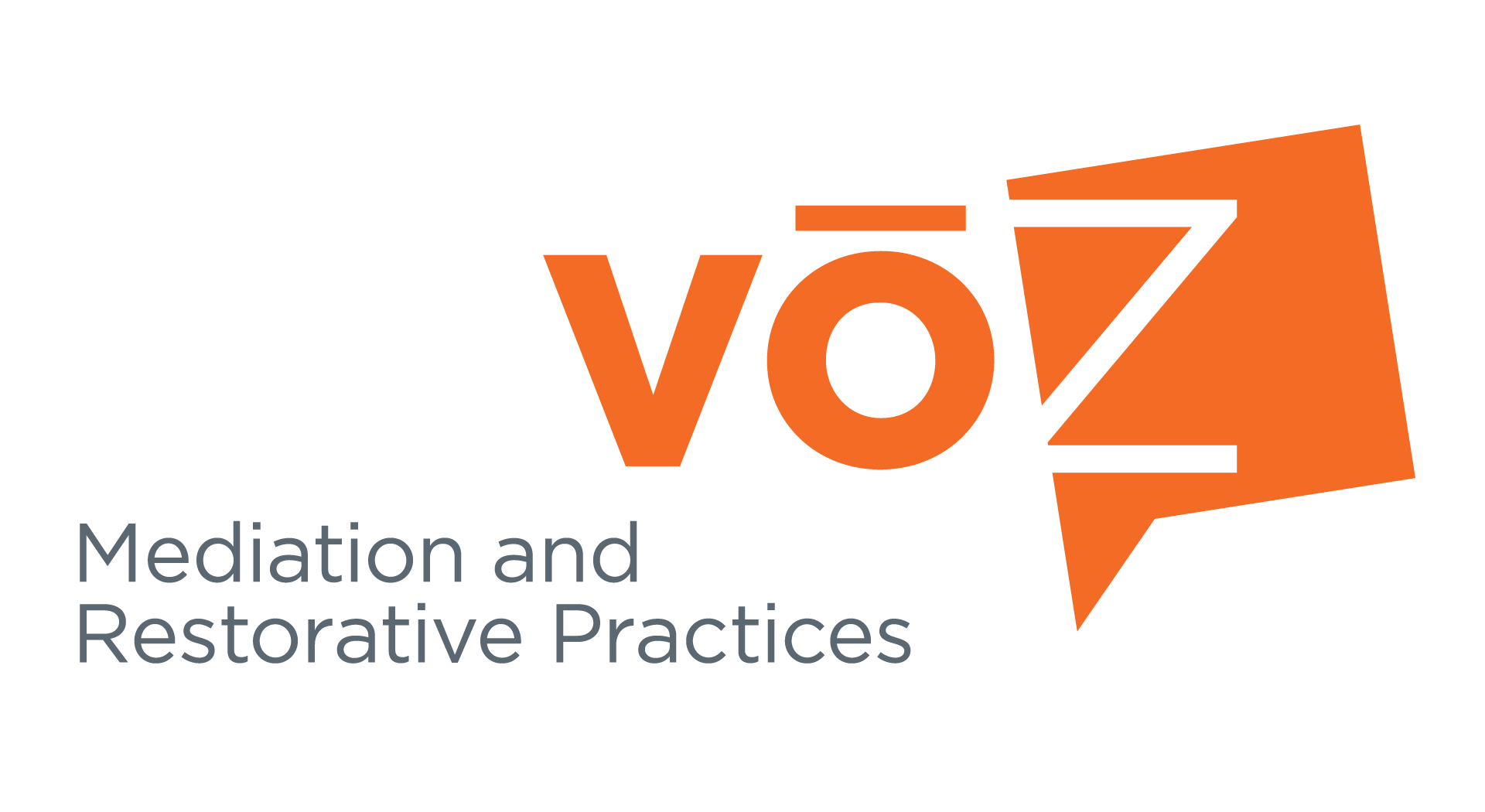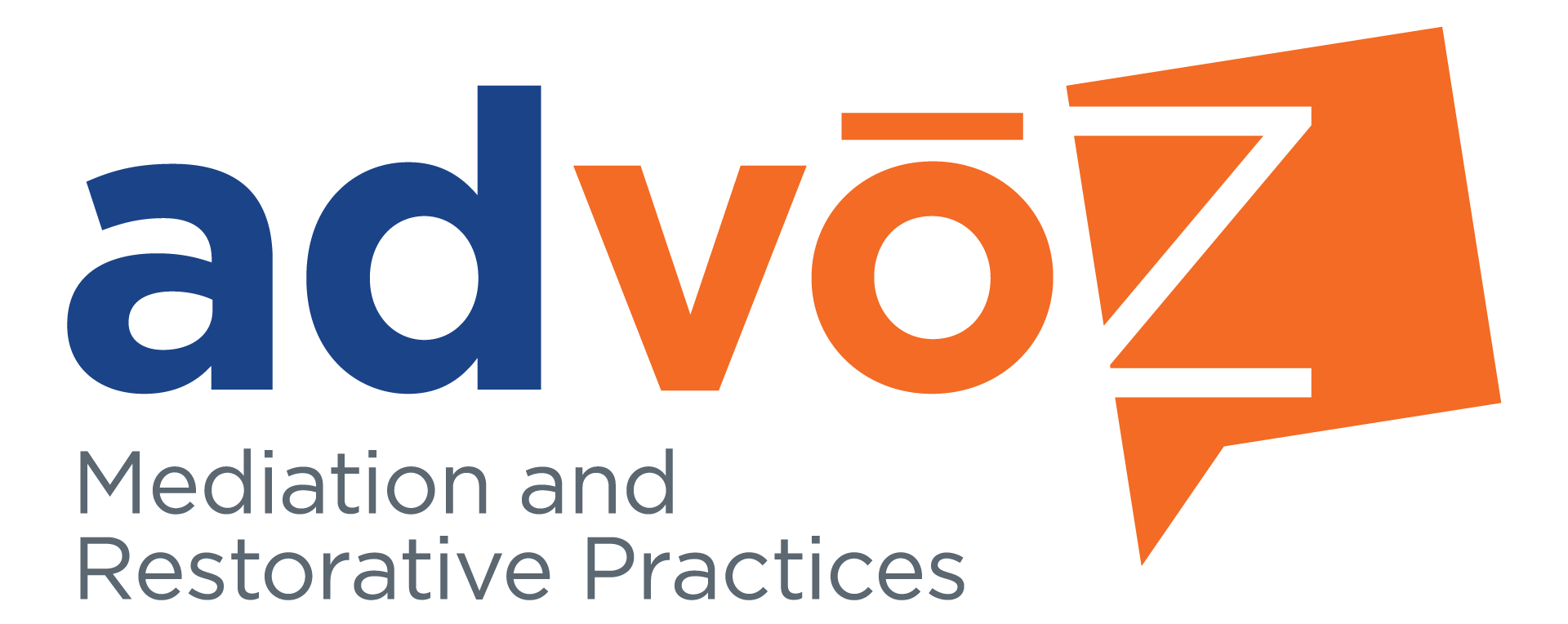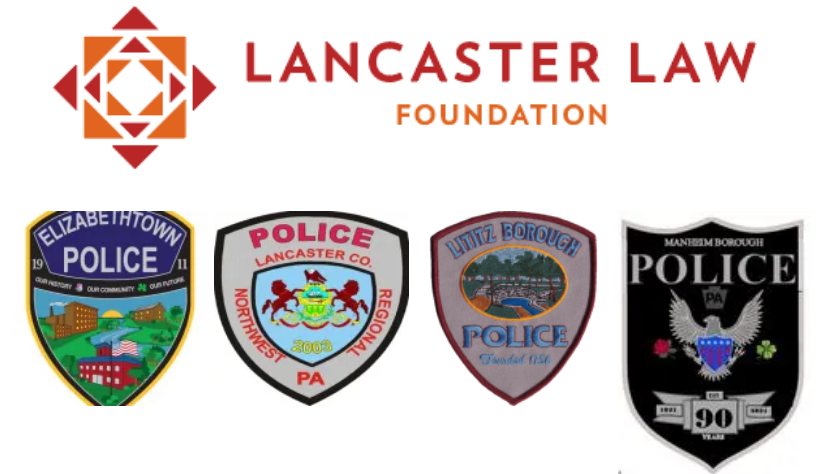Mediation Services
Finding Agreement Through Dialogue in Pennsylvania
Conflict is unavoidable, but you can find breakthrough resolution through mediation.
Trained and experienced mediators can guide you in conversations to clarify your interests, listen and be heard, and build an agreement that you and the other party can feel good about.
Have a voice in the outcome of your dispute with Advoz mediation services. With higher satisfaction and lower cost, we can help you mediate disputes with:
-
- Families
- Neighbors
- Organizations
- Business transactions
For crime or other situations of harm or violation, see Restorative Justice.
Advoz Mediation Services
Advoz mediators are professionally trained to establish a safe, neutral environment for all parties to tell their stories and create meaningful, durable solutions.
We can support you with mediation in the following areas:
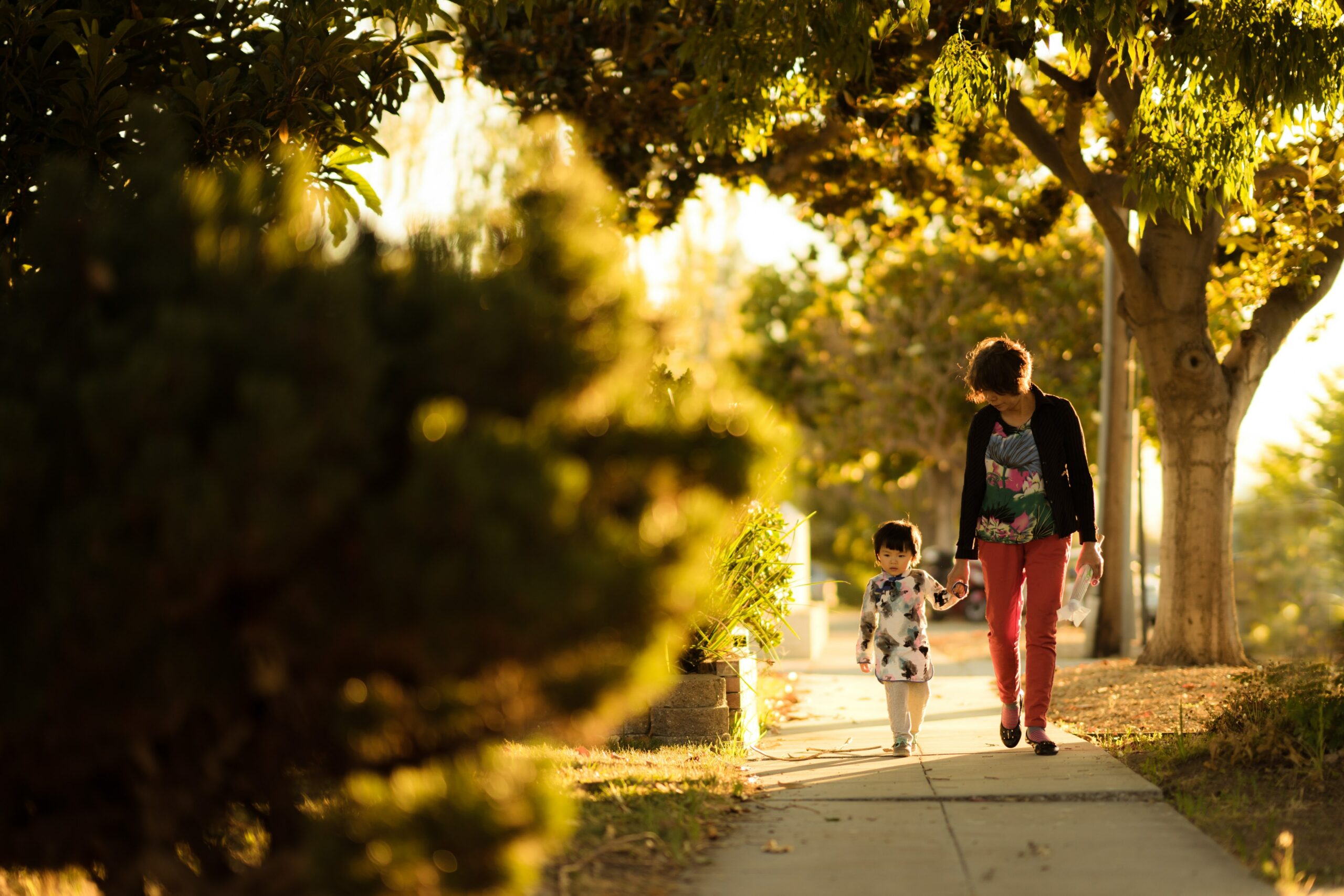
Family Disputes
- Child Custody & Divorce
- Elder Mediation
- Adult Guardianship
- Caregiver
- Estate, Trust & Inheritance

Organizations & Business Transactions with
- Real Estate
- Human Resources
- Organizational Change
Victim/Offender of crime or other situations of harm, violation or violence, see Restorative Justice.
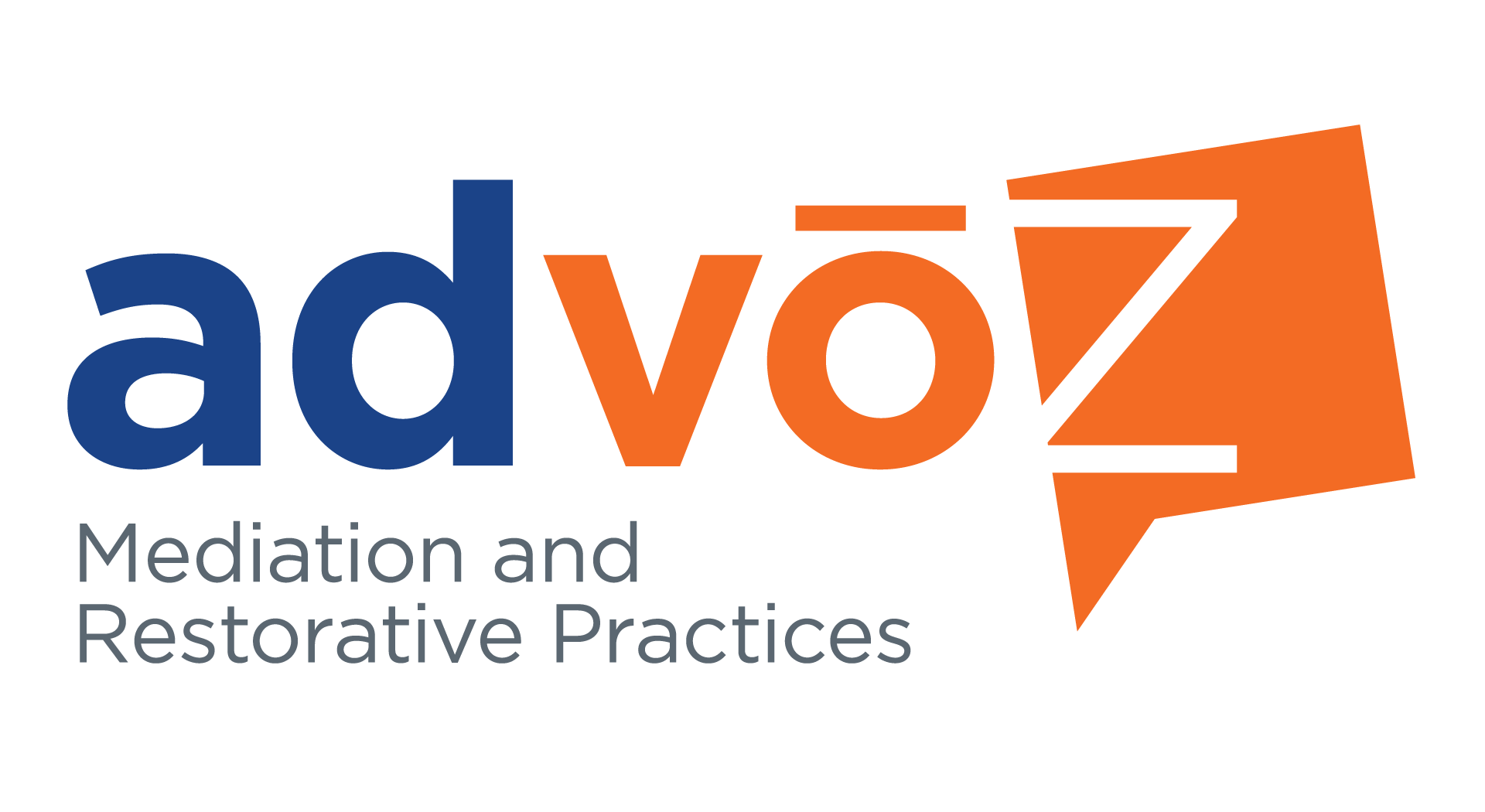
Get support for the conflict you face.
Advoz pairs you with trained, compassionate mediators who clarify your needs, address your goals and find common ground in productive conversation.
What is Mediation?
Mediation is the process in which a trained third-party facilitates communication and decision-making among parties to resolve current or ongoing disputes. Advoz uses a “facilitative” approach that manages a confidential dialogue process but puts you in charge of the outcome, without judgement or advice, maximizing your ability to reach a mutually acceptable agreement.
Why Mediate with Advoz?
- Practical: Legal proceedings are expensive, lengthy and may complicate the situation, while mediation often achieves quicker outcomes at lower rates.
- Relational: Mediation supports direct and respectful communication and the repair of trust and relationships often damaged in conflicts.
- Empowering: You are supported in presenting your perspective, voicing your needs and wishes, evaluating your options and making your decisions.
- Balanced: Mediators take responsibility for your safety (physically and emotionally) so you can participate equally.
- Inclusive: Your voice is key and co-mediators ensure a process that includes many perspectives.
- Fair and Feel-Good: You have an opportunity to create an agreement that is a mutually acceptable with the other(s).
Mediation can help people reach a fair and amicable resolution. It doesn’t always lead to an agreement, but it has many benefits.
Frequently Asked Questions
What is mediation?
Mediation is a method of discussion in which an impartial third presence helps two disputants identify solutions which are satisfactory to both of them. It is thoughtful, comprehensive and confidential.
What are the benefits of mediation?
Mediation can help people reach fair and amicable agreements while preserving relationships. It is cost-effective, impartial and often quicker than legal approaches.
Who are the mediators?
Advoz uses professionally trained community volunteer mediators of different ages, genders, ethnicities and professional backgrounds. Each volunteer must have at least 40 hours of training and is paired with a co-mediator to enhance fairness, inclusiveness, safety and fidelity of the process.
Is mediation legally binding?
That’s up to you. We suggest you speak with legal counsel in deciding whether to make your agreement legally binding.
What if no agreement is reached in mediation?
If after careful consideration there is still not agreement, options may include going to court, trying mediation a second time later, or continuing to negotiate on your own.
Can Advoz make the other party participate and force a fair outcome?
Mediation is voluntary, so each person participates at will. We do not determine or even suggest outcomes but give you time to reflect and agree only to what is right for you.
Is mediation therapy?
In mediation, you explain your view of the situation and your concerns, not to analyze but to generate concrete, realistic agreements to move forward.
How is Advoz mediation different from arbitration or just using an attorney?
We provide a time-tested format developed over decades to empower you to make the best decisions, rather than pushing answers and advice. Arbitration and what most attorneys call “mediation,” provide guidance but little space for you to have your own voice, which is key to an outcome you and the others involved can get behind.

What participants say
“We struggled to communicate with each other, and it was nice to have a third party there. The mediators were pleasant and attentive. The staff was great; I was surprised with the amount of time some things had taken….”
Mediation Client

Do you need support through a conflict you’re facing?
You are not alone.
Reach out today, and get support to work it out.
Child Custody & Divorce Mediation
Transitions Matter
Custody and divorce often get messy. Research shows that the way we make these life-changing transitions has the most impact on partners and children. Advoz is a community organization founded to help you talk through such challenging issues with the best possible outcome for all—including children—leading to a court-filed agreement that you help to create with supportive, trained mediators.
If you want to work through this difficult time with more control, lower cost, and improved working relationships than when you fully resort to the court system, contact us at (717) 397-2404 or click here. Want options? Just google “custody or divorce mediation” to find other local mediators.
What does it look like?
Similar to other kinds of mediation, mediation for custody and/or divorce is voluntary and confidential with impartial mediators who sit down with everyone involved, discuss the issues and help you determine a mutually acceptable agreement. In these situations, we request a separate preparatory meeting with each party to ensure safety, appropriateness and readiness for a joint session. Custody mediations often require just one joint session, while divorce mediations can require 3-5 sessions to complete an entire agreement checklist.
Why mediate custody and divorce?
- Increases communication and generally reduces harm to all affected relationships.
- You find your own solution and create your own agreement, not a judge.
- Typically it’s much less expensive than resorting to a court process, saving you thousands of dollars.
- Work it out faster than going to court or “he-said-she-said” games with attorneys.
- Check out five more reasons here!
How does a custody/divorce mediation work?
1.
Contact Us
Start by contacting Advoz at (717) 397-2404 or click here for a free initial consultation.
Advoz staff call each party and assigns two mediators to your case.
A one-hour pre-mediation meeting is generally scheduled with each of you to meet the mediators, discuss the situation, clarify your hopes and prepare for a joint session.
2.
Mediation Session
A two-hour joint mediation session is scheduled to gain clarity on issues and work toward an agreement. Stages of this process include an agreement on ground rules, opportunity to share without interruption, focus on issues and concerns and agreement-writing. Party’s lawyers may be present, if all parties agree, but attorneys are not necessary for a successful mediation.
3.
Move Forward
Agreements are written down in the mediation session and shared with all parties to be filed by attorneys.
(One joint session may be sufficient for a custody agreement; multiple sessions are often required for a divorce mediation process which includes a checklist and drafted memorandum of understanding submitted to the court.)

What participants say
“You guys are magicians…I never expected this outcome…” from two participants whose agreement included ongoing co-parenting counseling.
Custody Mediation Client
Does this replace an attorney?
We recommend that each party to a divorce mediation retains an attorney. Attorneys can be helpful to advise on an agreement, but they are not needed for a productive divorce or custody mediation session. We can provide a list of local family law attorneys who can work with a mediation process.
Isn’t mediation like couples counseling?
Mediation is not counseling. You will have a balance of time to talk, to listen and to work on issues, so it can help to (re)build trust in a relationship. Unlike counseling, where you might look at past issues in a relationship, you are in mediation primarily to work out an agreement. Mediators help you do that by focusing on a fair, inclusive and collaborative process toward agreement.
What’s next?
Learn more about mediation and its benefits. Each step of mediation is voluntary, guided by professionally trained neutral mediators attentive to your needs. Fees for mediation vary based on the number of sessions required but are generally 1/5 to 1/10 the cost of relying on attorneys. Financial assistance may also be available, so contact us to start the process!
Request services online or call us at (717) 397-2404 between 9 am – 4 pm, Monday-Friday.

You can make it through this conflict and find resolution.
You don’t need to go through it alone. We can help.
Landlord Tenant Mediation
The impact of eviction is not limited to the tenants and landlords. It also impacts children, employers, schools, social services, courts, neighbors, local governments, and many others. For this reason, we are including a broad group of partners focused on preventing eviction by maximizing mediated solutions.
Services for tenants:
-
- Financial Counseling to assist with credit and budget issues before landlords need to pursue eviction,
- Connecting clients to resources that can help make back payments,
- Exploration of payment options regarding debts such as budgeting and payment plans or financial assistance,
- Access to trained mediators who provide a non-hostile environment to unpack and share perspectives.
Services for landlords:
-
- Access to trained mediators that can help facilitate discussions between parties to help build a favorable outcome for everyone.
- Provide a respectful environment where the impact of late or incomplete payments can be presented, addressed, and acknowledged.
In partnership with:

Goals of this program:
-
- Everyone walks away with a signed agreement and is satisfied with the outcome
- Tenant is securely housed 6 months after mediation (not necessarily in the same address)
- Prevent an eviction from being filed for at least 6 months
- Both parties adhere to the agreement for at least 6 months
Thanks to grant monies from government and private entities, we have funding opportunities for 25-30 cases for this partnered Landlord-Tenant mediation service. We look forward to bringing the community together in healthy and effective dialogue.
For more information contact our office (717) 397-2404, to submit your specific case, please fill out the Advoz Housing Dispute Form below.


Law Enforcement Rapid Referral
Click here for the Rapid Referral Mediation Form.
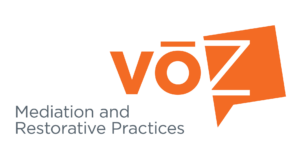
Find resolution
Let us be there with you through your conflict and help you create the outcome you hope for. Advoz mediation is here for you anytime you need.

“If you need help working through a challenging situation, Advoz mediation is a powerful tool to do that.”
– Advoz Advocate
Find Resolution and Healing
We believe there is always a possibility of restoration.
Let us create those possibilities together.
Advoz: Mediation, Restorative Justice & Training in Pennsylvania
